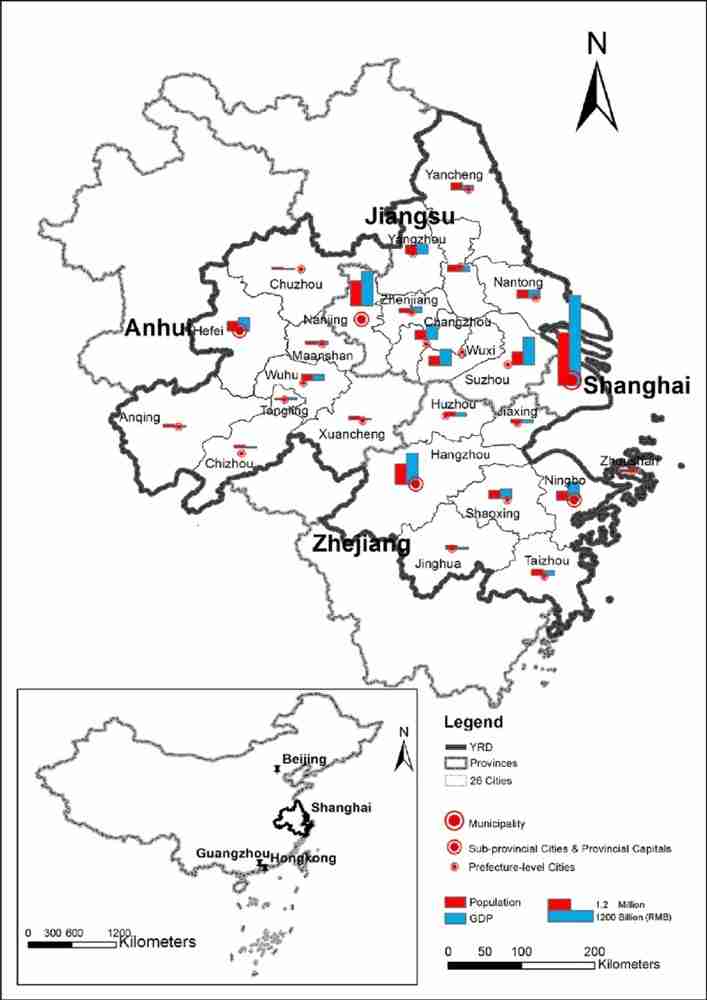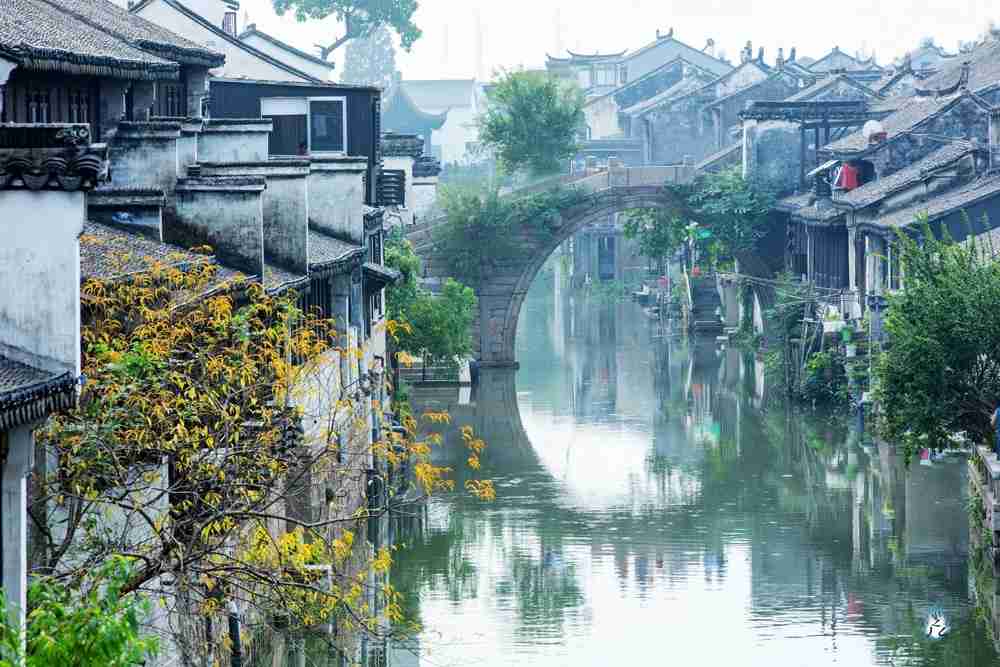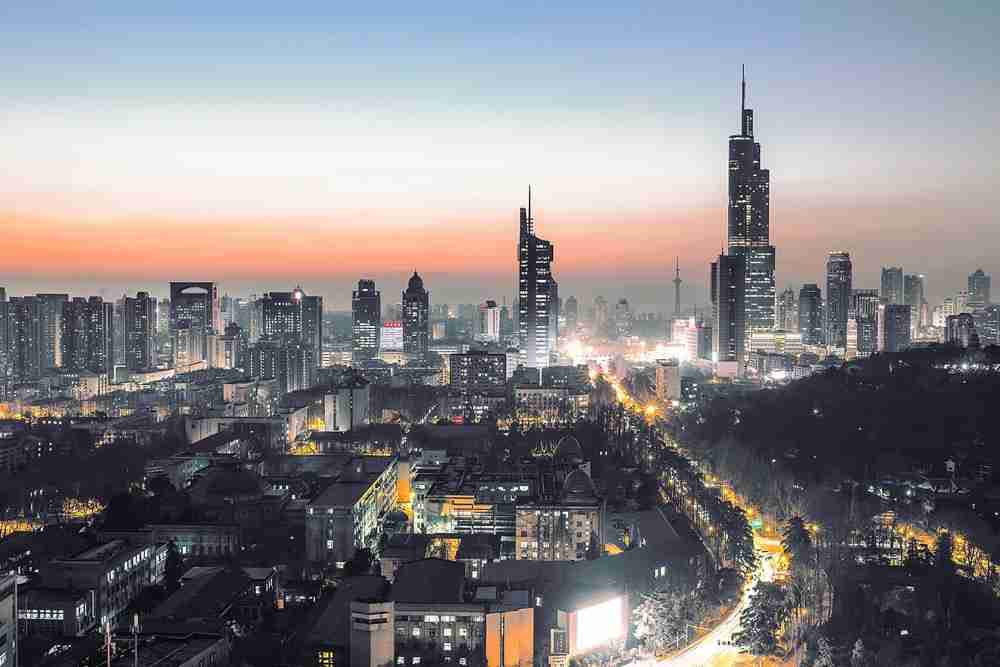Like the Pearl River Delta, the Yangtze River Delta (YRD)is an essential region in China, and it is now said to be driving economic development in the country. To understand exactly how the Yangtze River Delta has played a role in boosting economic growth in China.
Where Is Yangtze River Delta Located?

Yangtze River Delta is one of the top 3 metropolitan regions of China. It is centered near Shanghai, extending beyond Zhenjiang. The Yangtze Delta is made up of numerous tributaries, branches, ancient riverbeds, lakes, and marshes, and all these elements are connected with the main river channel. During big floods, the delta gets submerged completely.
YRD is also a triangular megalopolis that is surrounded but the cities of Shanghai, Zhejiang, and Jiangsu. To the South, the Yangtze River drains to the East China Sea. It remains one of China’s most fertile rivers that allow for products like hemp, grain, tea, and cotton to thrive.
But thanks to technological advancements in the region, the Yangtze River Delta is one of the upcoming economic hubs in China, which is expected to boost economic performance in the state to a large extent. So, as China sets in motion plans to strengthen its transport sector in the next 15 and as the country puts in place measures to shape the domestic transportation network, the Yangtze River Delta is expected to have a strong positive influence over the country.
Note that the Yangtze River Delta is located in the East end of China, and it encompasses different municipalities like Shanghai, Zhejiang, Anhui, and Jiangsu, which make this delta region the perfect location for enhanced levels of economic success.
The YRD covers a large area with a total of 358,000 square kilometers, and it boasts a very active level of economic development, not to mention the fact that it is not just opening up but also boasts a high level of creativity.
YRD is envisioned to be China’s hotbed that will nurture not only new and more robust industries but also new innovations and technologies that will cumulatively boost the overall competitiveness of the country.
The YRD was mentioned for the first time in May 2016 by China’s State Council, and it has since become of the biggest driving forces of the country’s economy. President Xi, in 2018 November, made the declaration for the building/ development of Yangtze River Delta into the nation’s big strategy. It’s expected to be a successful economic hub just like the Pearl River Delta and the other two metropolitan areas of the Beijing-Tianjin-Hebei Area and the Guangdong-Hong Kong-Macau Greater Bay Area/ GBA. Given the size of the YRD and its overall output economically, as well as its location in Shanghai, YRD is the best of China’s investments yet.
YRD is made of 27 cities and has a large area of 225,065 square kilometers. It also boasts a large population that stood at 163.3 million people in 2018, along with a total output of 20% of China’s GDP for the year. YRD also contributed to China’s total direct foreign investment inflows by adding 39% to the nation’s basket.
Yangtze River Delta – Plans for Future
- Enhanced Competitiveness
While the YRD is largely recognized for the high level of business competence and economic dynamism it presents, it’s been noted by the Chinese government that its development in the future should be focused on an overall increase in its global competitiveness.
- Improved Connectivity
Yangtze River Delta is, unfortunately, not as connected as one would expect, and this is one of the current focus areas aimed to improve the state of the Yangtze River Delta and its overall level of connectivity. Increased connectivity is believed to promise an overall increase in the region’s efficiency. This would mean the development of the rural areas, an increase in urbanization by up to 70%, and the construction of 5G networks.
Other measures that would enhance the economic growth of the Yangtze River Delta include:
- Improved environment
- Increased standards of living
- Enhancement of the current technologies along with spotlighting technologies
- Improved support networks
Role of Yangtze River in Ancient China

While the Yangtze River Delta is now one of China’s biggest economic hubs, it is not a modern invention. Like the Yellow River, the Yangtze River played a huge role in cultural development as well as the civilization of Ancient China.
The river encouraged rice farming, especially because the weather in the areas around the river received a lot of rainfall and was warm.
But the weather and farming aside, the Yangtze River was also an important boundary that separated Southern and Northern China. The Battle of the Red Cliffs was in the Yangtze River, primarily because this river is not only difficult to cross but also very wide.
From the 4th century, the Yangtze River Delta was China’s largest economic, cultural, and political center, with Hangzhou serving as China’s capital for the Southern Song Dynasty before the capital was moved to Nanjing early on during the reign of the Ming Dynasty and before Emperor Yongle transferred the capital in 1421 to Beijing.
Yangtze River Delta Population
YRD has a large population of at least 163.3 million people. Records from 2018 show that the Yangtze River Delta had a GDP of about $2.2 trillion, which is more or less the same as that of Italy.
Yangtze River Delta Cities

The main cities in the Yangtze River Delta include Wuxi, Shanghai, Changzhou, Nanjing, Nantong, Suzhou, Yangzhou, Yancheng, Zhenjiang, Wenzhou, Hangzhou, Jiaxing, Huzhou, Jinhua, Shaoxing, Hefei, Zhoushan, Taizhou/Jiangsu, Wuhu, Tongling, Maanshan, Chizhou, Anqing, Xuancheng, and Chuzhou.
The main metropolitan areas in the Yangtze River Delta include the Greater Shanghai, Hefei, Suxi, Nanjing, and Ningbo Metropolitan areas.